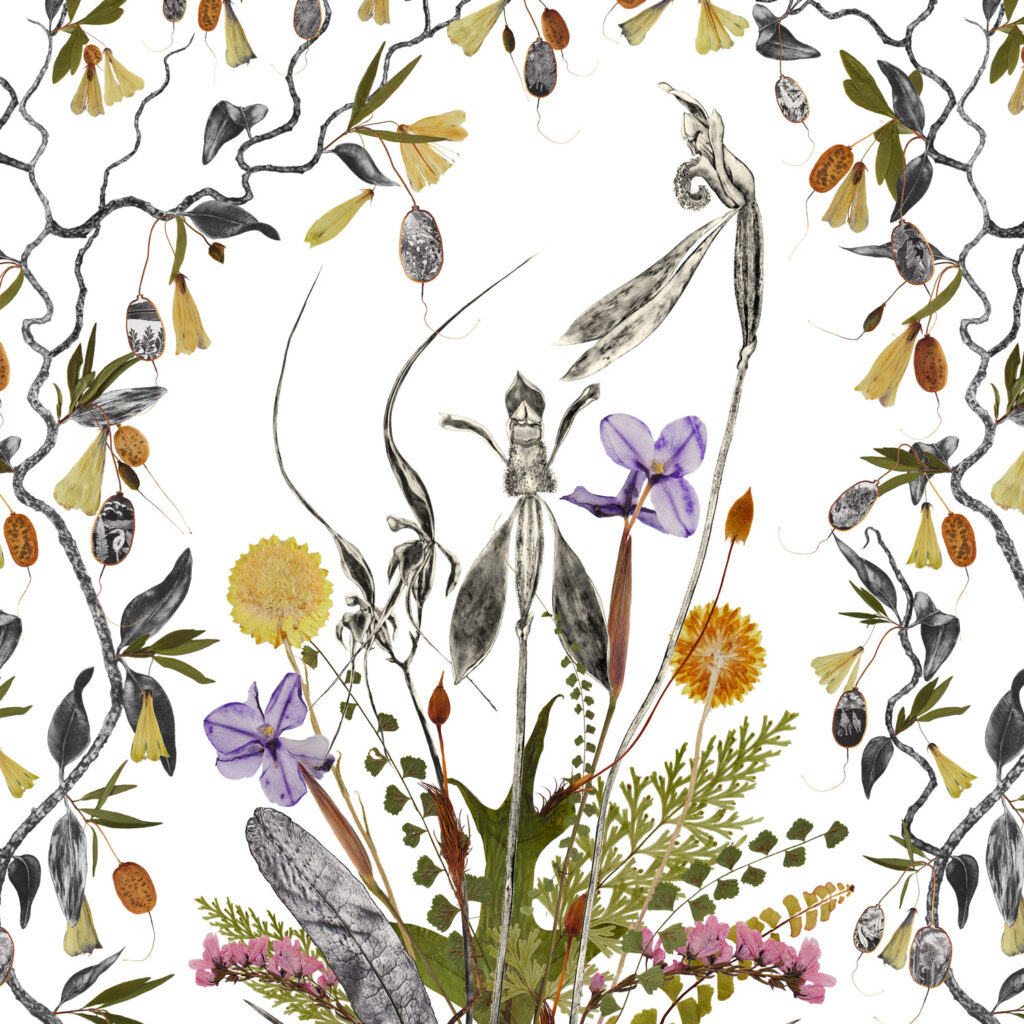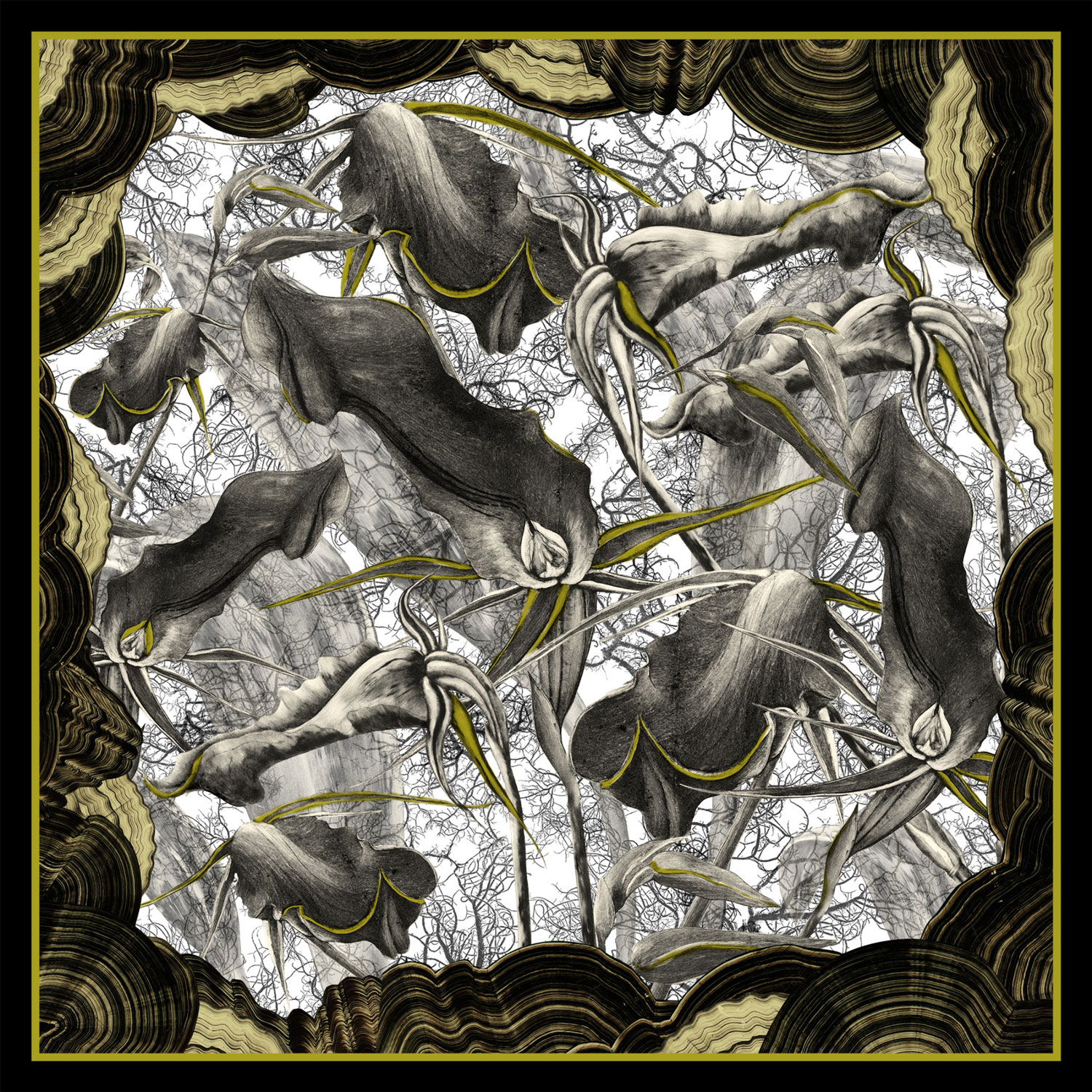Deborah Wace
Exhibition Dates :
Friday 19 December 2025 – Sunday 4 January 2026
Monday – Thursday 10:00am – 5:00pm
Fridays 10:00am – 5:30pm
Saturdays 9:30am – 4:00pm
Sundays 11:00am – 4:00pm
CLOSED Christmas Day
**Friday 19 December 2025 OPEN 10:00am – 7:30pm
Opening Event :
Friday 19 December 2025, 5:30pm – 7:30pm
This intimate collection of artwork, fabric design, and wallpaper, creates a window into the botany of Tasmanian Native Orchids and wild plant communities. Exploring a narrative of plant collectors, early naturalists, and deep connection to ecology and place. Art as advocacy, reflects 30 years of Deborah Wace‘s plant pressing and printmaking.
ORCHIDACIOUS – Wild and Rare Tasmanian Flora, is an exploration of the curious and bizarre world of Tasmanian native Orchids and some of the plant communities they live among. The wild and the rare interconnected world of small plants and fungi support a thriving ecosystem, in fragile often fragmented habitats, at risk.
In this collection, Deborah creates artwork drawing on a personal botanical pressed specimen collection, gathered over 30 years. This collection has been digitised at high resolution, to create rich, layered and complex botanical designs, printed onto fine fabric and wallpapers, substrates for glass, and in limited edition fine art, using digital, original dry point and monoprint printmaking techniques.
• You will find wallpaper panels available on the roll for easy travel, or mounted and framed by light and shade.
• You can try on gorgeous silk satin scarves with many designs featuring Tasmanian flora and printmaking.
• You can order artwork for application onto glass, at scale.
• You might like to take home small, mounted, one-off monoprints.
• Garments created from repeat pattern silk and linen, will be on show.
• Linen cushions and covers might tempt you.
Deborah uses her plant specimen collection and her printmaking to create an intersection between botany, fine fabrics, and interior design. Refreshing a conversation about ecology and threatened species and the protection of valuable ecological, historical and cultural environments
These designs overflow with stories of Tasmania’s wild and endangered plant species, of the need to protect this precious natural world and of its connection to early French and modern naturalists, contributing to one of the deepest threads of human endeavour – Botanical Knowledge.
Deborah Wace is a Churchill Fellow, a botanical artist & fabric designer, ecological activist, and professional printmaker , teacher and singer from Tasmania. She creates original artwork that is richly linked to the early Tasmanian and French botanical, cultural and historical record.
Scattered through this three-week exhibition are Artist Talks; opportunities for delving deeper through song and short film presentation about:
• The French D’Entrecasteaux expedition visit to Recherche Bay in 1792/3
• Deborah’s 2018 Churchill Fellowship.
• Major film projects like ‘The Sartorial Naturalist’, featuring underwater swathes of silk with contemporary dancers.
• Her Gardening Australia ABC TV segment – Down your Garden Path
(find more about these events via Facebook)
Her work connects the dots between Australia and France by referencing the earliest French scientific expeditions to Tasmania, incorporating the art/science stories into songwriting and designs on fabric and wallpapers.
Using contemporary artwork to democratise and deepen this historical narrative.
Deborah was awarded a Churchill Fellowship that allowed her to access and reinterpret the botanical specimens and print collections located in Paris, Florence, Le Havre and Kew, from the d’Entrecasteaux and Baudin expeditions to Tasmania, into contemporary cultural motifs and Australian designs.
This melding of art and science, along with history and culture, amplifies the interconnection of us into nature and of each plant, to each other.
Tasmania has a rich and diverse native orchid flora with over 200 species, 71 endemic species, 39 of which are currently threatened.
Orchids have evolved spectacularly to suit their ecological niche. Highly targeted and accomplished mimics of the natural world, some orchids evolve to resemble female wasps, attracting the male wasp to mate with it in order to be pollinated.
Some orchids emit a pheromone that is molecularly identical to that emitted by its target insect, inviting cross species sex, feeding its pollinator an ambrosia banquet!
Rich conversations go on underground at a mycorrhiza level, specifically adapted fungi delivering nutrient for orchids to survive. Every orchid is reliant upon different types of fungi, bacteria, pollinating insect, habitat and climate.
This is a heady artistic space! Come and be charmed by the wild orchids revealed here. Some of the larger framed orchid drypoint prints are 2m tall, scaled up across 4 plates, printed and digitally stitched together to show the entire plant, root-to-flower. You will never look at the bush in the same way, knowing tiny orchids are aware of you, as you slow down to appreciate the small, wild and rare Tasmanian flora.
Accessibility
Accessible Toilet (located in the Courtyard)
Registered Assistance Animals welcome
Wheelchair Accessible


